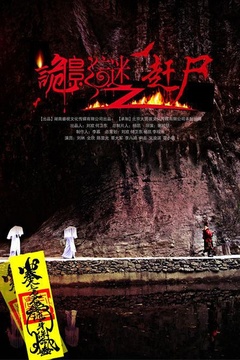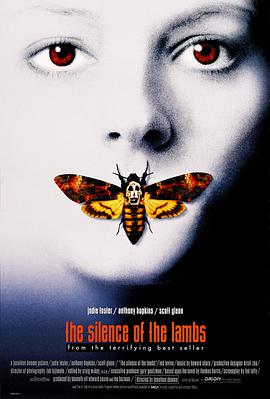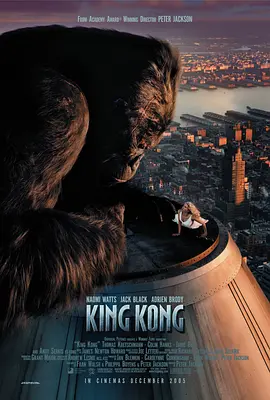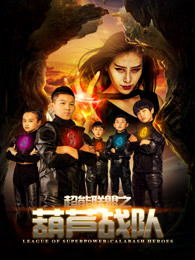年份:2017 类型:科幻片 剧情,悬疑,犯罪,黑色电影
主演:汪碧清,韩飞
导演:林木森
地区:中国
语言:汉语普通话
剧情简介
剧情介绍:《时空妖姬》以轻松搞笑的方式讲述了一部古装奇幻轻喜剧故事。影片的女主角潘潘是一个在名著中没有名气或者没有根据的小网红。除了做直播外,她平时在剧组的剧中饰演带旗士兵的角色,和其他人没有任何关系。重要的事情。一天拍戏的时候,盼盼无意中发现了一个指南针。误转罗盘后,盼盼穿越到宋朝,被时空警长吉兰误认为时空盗贼。在与吉兰的交易中,潘潘意外杀死了历史上的一个关键人物——潘金莲。为了弥补自己的错误,修改历史,吉兰威胁潘潘假扮潘金莲,让历史顺其自然。无奈之下,盼盼只好妥协……
1. shanghai | ʃaŋˈhʌɪ | transitive verb (shanghais, shanghaiing, shanghaied)
1) historical: force (someone) to join a ship lacking a full crew by drugging them or using other underhand means.
2) informal: coerce or trick (someone) into a place or position or into doing something
other than this and the air of mystery that Shanghai gives to Elsa (Rita Hayworth), I could find no other factors in this film that is related to Shanghai - or, rather, the Shanghai that I know. I must try to forget about this before I start a race-and-ethnicity-themed ramble.
2. Also, Orson Welles's fake Irish accent is just as disturbing as Rita Hayworth's Chinese (Cantonese).
3. But hey, Rita Hayworth. Yeah I know. Bold, mysterious, immensely charming, sexy to the extent of being implicitly promiscuous (it was hinted that she may have been a high-class prostitute before she married Bannister) - and most importantly, dangerous. Femme fatale to its finest. (But still under the male gaze, of course.)
4. Mike O'Hara (Orson Welles) is essentially a reinvention of the Byronic hero (which is almost narcissist, in a sense?). Just like most noir heroes, he is watched by fate (or God?) all the time - note the camera angle. This portrayal is of course related to the influence of the Gothic romance. When seen with the other main characters of the male sex (who are all more sinister and much more filthy rich) than him, Mike could maybe be understood as a representation of the working class.
5. Law is depicted as nothing but a corrupt joke in this film. The attorney's chess playing while waiting for the jury to come to a decision, the best criminal lawyer's cross-examination of himself, and even the fake confession letter (gosh that letter sounds so fake!) - all this is ridiculed as just a game that really, in the end, gives no one justice. But the pistol does give justice.
6. New York City, oh the greatest city of all time, is seen as an intricate labyrinth and an enigma. The labyrinth of plot gives you this sense of being trapped and fooled and, yeah, basically being shanghaied. It's all a game (I mean, hey, an amusement park for the climax scene) about money, sex and crime, really.
7. The Germans. The sense of disorientation, given by the labyrinth-like city, is visualized through the complex use of mirrors and irregular shapes in the climax scene, which is, obviously, a tribute to German expressionism. And the Freudian implications of lust, the wartime/postwar angst ("the gas chamber")...
8. I'll take a wild guess here. The beautiful aquarium sequence, with Mike and Elsa's silhouettes, in some way inspired Woody Allen's planetarium sequence in Manhattan.
9. This was the first film that I properly watched at Birkbeck Cinema, just several doors away from the great Laura Mulvey and three houses from where the Bloomsbury Group came into being. I'd love to have a glass of champagne to this new start. So, cheers.
Ref.: http://www.filmsite.org/ladyf3.html
{if:"
1. shanghai | ʃaŋˈhʌɪ | transitive verb (shanghais, shanghaiing, shanghaied)
1) historical: force (someone) to join a ship lacking a full crew by drugging them or using other underhand means.
2) informal: coerce or trick (someone) into a place or position or into doing something
other than this and the air of mystery that Shanghai gives to Elsa (Rita Hayworth), I could find no other factors in this film that is related to Shanghai - or, rather, the Shanghai that I know. I must try to forget about this before I start a race-and-ethnicity-themed ramble.
2. Also, Orson Welles's fake Irish accent is just as disturbing as Rita Hayworth's Chinese (Cantonese).
3. But hey, Rita Hayworth. Yeah I know. Bold, mysterious, immensely charming, sexy to the extent of being implicitly promiscuous (it was hinted that she may have been a high-class prostitute before she married Bannister) - and most importantly, dangerous. Femme fatale to its finest. (But still under the male gaze, of course.)
4. Mike O'Hara (Orson Welles) is essentially a reinvention of the Byronic hero (which is almost narcissist, in a sense?). Just like most noir heroes, he is watched by fate (or God?) all the time - note the camera angle. This portrayal is of course related to the influence of the Gothic romance. When seen with the other main characters of the male sex (who are all more sinister and much more filthy rich) than him, Mike could maybe be understood as a representation of the working class.
5. Law is depicted as nothing but a corrupt joke in this film. The attorney's chess playing while waiting for the jury to come to a decision, the best criminal lawyer's cross-examination of himself, and even the fake confession letter (gosh that letter sounds so fake!) - all this is ridiculed as just a game that really, in the end, gives no one justice. But the pistol does give justice.
6. New York City, oh the greatest city of all time, is seen as an intricate labyrinth and an enigma. The labyrinth of plot gives you this sense of being trapped and fooled and, yeah, basically being shanghaied. It's all a game (I mean, hey, an amusement park for the climax scene) about money, sex and crime, really.
7. The Germans. The sense of disorientation, given by the labyrinth-like city, is visualized through the complex use of mirrors and irregular shapes in the climax scene, which is, obviously, a tribute to German expressionism. And the Freudian implications of lust, the wartime/postwar angst ("the gas chamber")...
8. I'll take a wild guess here. The beautiful aquarium sequence, with Mike and Elsa's silhouettes, in some way inspired Woody Allen's planetarium sequence in Manhattan.
9. This was the first film that I properly watched at Birkbeck Cinema, just several doors away from the great Laura Mulvey and three houses from where the Bloomsbury Group came into being. I'd love to have a glass of champagne to this new start. So, cheers.
Ref.: http://www.filmsite.org/ladyf3.html
"<>"" && "
1. shanghai | ʃaŋˈhʌɪ | transitive verb (shanghais, shanghaiing, shanghaied)
1) historical: force (someone) to join a ship lacking a full crew by drugging them or using other underhand means.
2) informal: coerce or trick (someone) into a place or position or into doing something
other than this and the air of mystery that Shanghai gives to Elsa (Rita Hayworth), I could find no other factors in this film that is related to Shanghai - or, rather, the Shanghai that I know. I must try to forget about this before I start a race-and-ethnicity-themed ramble.
2. Also, Orson Welles's fake Irish accent is just as disturbing as Rita Hayworth's Chinese (Cantonese).
3. But hey, Rita Hayworth. Yeah I know. Bold, mysterious, immensely charming, sexy to the extent of being implicitly promiscuous (it was hinted that she may have been a high-class prostitute before she married Bannister) - and most importantly, dangerous. Femme fatale to its finest. (But still under the male gaze, of course.)
4. Mike O'Hara (Orson Welles) is essentially a reinvention of the Byronic hero (which is almost narcissist, in a sense?). Just like most noir heroes, he is watched by fate (or God?) all the time - note the camera angle. This portrayal is of course related to the influence of the Gothic romance. When seen with the other main characters of the male sex (who are all more sinister and much more filthy rich) than him, Mike could maybe be understood as a representation of the working class.
5. Law is depicted as nothing but a corrupt joke in this film. The attorney's chess playing while waiting for the jury to come to a decision, the best criminal lawyer's cross-examination of himself, and even the fake confession letter (gosh that letter sounds so fake!) - all this is ridiculed as just a game that really, in the end, gives no one justice. But the pistol does give justice.
6. New York City, oh the greatest city of all time, is seen as an intricate labyrinth and an enigma. The labyrinth of plot gives you this sense of being trapped and fooled and, yeah, basically being shanghaied. It's all a game (I mean, hey, an amusement park for the climax scene) about money, sex and crime, really.
7. The Germans. The sense of disorientation, given by the labyrinth-like city, is visualized through the complex use of mirrors and irregular shapes in the climax scene, which is, obviously, a tribute to German expressionism. And the Freudian implications of lust, the wartime/postwar angst ("the gas chamber")...
8. I'll take a wild guess here. The beautiful aquarium sequence, with Mike and Elsa's silhouettes, in some way inspired Woody Allen's planetarium sequence in Manhattan.
9. This was the first film that I properly watched at Birkbeck Cinema, just several doors away from the great Laura Mulvey and three houses from where the Bloomsbury Group came into being. I'd love to have a glass of champagne to this new start. So, cheers.
Ref.: http://www.filmsite.org/ladyf3.html
"<>"暂时没有网友评论该影片"}{end if}












时空妖姬影评
1. shanghai | ʃaŋˈhʌɪ | transitive verb (shanghais, shanghaiing, shanghaied) 1) historical: force (someone) to join a ship lacking a full crew by drugging them or using other underhand means. 2) informal: coerce or trick (someone) into a place or position or into doing something other than this and the air of mystery that Shanghai gives to Elsa (Rita Hayworth), I could find no other factors in this film that is related to Shanghai - or, rather, the Shanghai that I know. I must try to forget about this before I start a race-and-ethnicity-themed ramble.
2. Also, Orson Welles's fake Irish accent is just as disturbing as Rita Hayworth's Chinese (Cantonese).
3. But hey, Rita Hayworth. Yeah I know. Bold, mysterious, immensely charming, sexy to the extent of being implicitly promiscuous (it was hinted that she may have been a high-class prostitute before she married Bannister) - and most importantly, dangerous. Femme fatale to its finest. (But still under the male gaze, of course.)
4. Mike O'Hara (Orson Welles) is essentially a reinvention of the Byronic hero (which is almost narcissist, in a sense?). Just like most noir heroes, he is watched by fate (or God?) all the time - note the camera angle. This portrayal is of course related to the influence of the Gothic romance. When seen with the other main characters of the male sex (who are all more sinister and much more filthy rich) than him, Mike could maybe be understood as a representation of the working class.
5. Law is depicted as nothing but a corrupt joke in this film. The attorney's chess playing while waiting for the jury to come to a decision, the best criminal lawyer's cross-examination of himself, and even the fake confession letter (gosh that letter sounds so fake!) - all this is ridiculed as just a game that really, in the end, gives no one justice. But the pistol does give justice.
6. New York City, oh the greatest city of all time, is seen as an intricate labyrinth and an enigma. The labyrinth of plot gives you this sense of being trapped and fooled and, yeah, basically being shanghaied. It's all a game (I mean, hey, an amusement park for the climax scene) about money, sex and crime, really.
7. The Germans. The sense of disorientation, given by the labyrinth-like city, is visualized through the complex use of mirrors and irregular shapes in the climax scene, which is, obviously, a tribute to German expressionism. And the Freudian implications of lust, the wartime/postwar angst ("the gas chamber")...
8. I'll take a wild guess here. The beautiful aquarium sequence, with Mike and Elsa's silhouettes, in some way inspired Woody Allen's planetarium sequence in Manhattan.
9. This was the first film that I properly watched at Birkbeck Cinema, just several doors away from the great Laura Mulvey and three houses from where the Bloomsbury Group came into being. I'd love to have a glass of champagne to this new start. So, cheers.
Ref.: http://www.filmsite.org/ladyf3.html